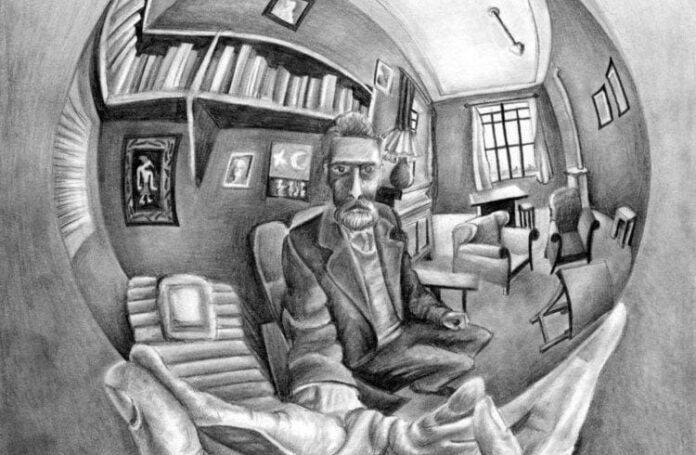Local Businesses Create Masterpieces Every Day.
Along the streets of every city and town lies an unassuming gallery, where each day local business owners craft their art from a blank canvas, much like the Old Master painters of the past. When considered in this light, there is much a local entrepreneur can learn from iconic figures like Leonardo da Vinci, Johannes Vermeer, and Vincent van Gogh. It highlights the symphony of struggles, the dance of determination, and the silent battle with the inner critic that both artists and entrepreneurs endure in their quest for their masterpiece.
The Brushstrokes of Business: Vision, Persistence, and Self-Critique
There is a new Renaissance happening today and business owners caught right in the middle of it. The desire for the new and different, affordable but purposeful has never been in higher demand. Today’s owners must be technicians, managers, and strategists of their own vision. They blend the elements of commerce– brand, operations, and service – to create an experience that is not just functional but also artistically fulfilling for their patrons. Every transaction is a testament to their dedication, every satisfied customer a nod to the owner’s dream.
Every transaction is a testament to dedication, every satisfied customer a nod to the owner’s dream.

jQuery(window).on(‘elementor/frontend/init elementor/popup/show’, function() {
var $currentTooltip = ‘#eael-section-tooltip-5e2a537’;
if (typeof tippy !== ‘undefined’) {
tippy($currentTooltip, {
content: ‘Click for more information’,
placement: ‘top’,
animation: ‘scale’,
arrow: ‘1’,
arrowType: ‘sharp’,
duration: ‘300’,
distance: ’10’,
delay: ‘400’,
size: ‘regular’,
trigger: ‘mouseenter focus’,
animateFill: false,
flip: true,
flipOnUpdate: true,
interactive: true,
flipBehavior: ‘flip’,
maxWidth: 350,
zIndex: 99999,
followCursor: false,
onShow(instance) {
var tippyPopper = instance.popper;
jQuery(tippyPopper).attr(‘data-tippy-popper-id’, ‘5e2a537’);
}
});
}
});
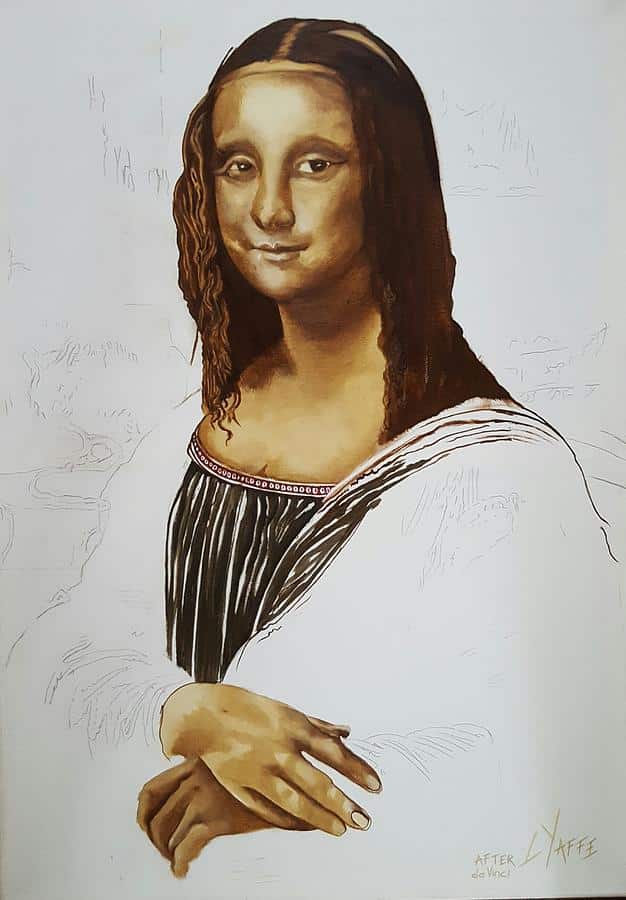
Mona Lisa
Although it’s clear that da Vinci struggled with ADHD, a common trait for entrepreneurs, he managed to pursue his life without worrying about it.
Painted between 1503 and 1517, da Vinci’s alluring portrait has been dogged by two questions since the day it was made: Who is the subject, and why is she smiling? A number of theories for the former have been proffered over the years: That she’d the wife of the Florentine merchant Francesco do Barolomeo del Giocondo (ergo, the work’s alternative title La Gioconda); that she’s Leonardo’s mother, Caterina, conjured from Leonardo’s boyhood memories of her, and finally, that it’s a self-portrait in drag. As for that famous smilek its enigmatic quality has driven people crazy for centuries. Whatever the reason, Mona Lisa’s look of preternatural calm comports with the idealized landscape behind her, which dissolves into the distance through Leonardo’s use of atmospheric perspective.
As much as has been revolutionized in the last 50 (or even 20) years, we would do well to remember that we aren’t the first to face a vastly changing world. Between the 14th and 17th centuries there was a cultural rebirth in art, science, technology, politics and more. This too was a throwback to an earlier time, the ancient Greco-Roman culture. More remembered for its monuments than recorded history, the Greek and Roman ruins found new admirers coming out from under the direction of a church that believed the only thoughts worth thinking were about salvation. Interestingly, even with the invention of the Gutenberg press, much of what we know of the Renaissance can only be inferred from their masterpieces rather than accounts of the lives of the people who made them.
It should be natural to think that we are judged by our actions and, in the case of local businesses, our storefronts. The genius of Leonardo da Vinci is evident from his Mona Lisa, but we know little about the man who painted it. His life is mostly explored through what he created. An intensely private person, we don’t know about his attitudes or feelings.
jQuery(window).on(‘elementor/frontend/init elementor/popup/show’, function() {
var $currentTooltip = ‘#eael-section-tooltip-1c8d24c’;
if (typeof tippy !== ‘undefined’) {
tippy($currentTooltip, {
content: ‘Click for more information’,
placement: ‘top’,
animation: ‘scale’,
arrow: ‘1’,
arrowType: ‘sharp’,
duration: ‘300’,
distance: ’10’,
delay: ‘400’,
size: ‘regular’,
trigger: ‘mouseenter focus’,
animateFill: false,
flip: true,
flipOnUpdate: true,
interactive: true,
flipBehavior: ‘flip’,
maxWidth: 350,
zIndex: 99999,
followCursor: false,
onShow(instance) {
var tippyPopper = instance.popper;
jQuery(tippyPopper).attr(‘data-tippy-popper-id’, ‘1c8d24c’);
}
});
}
});
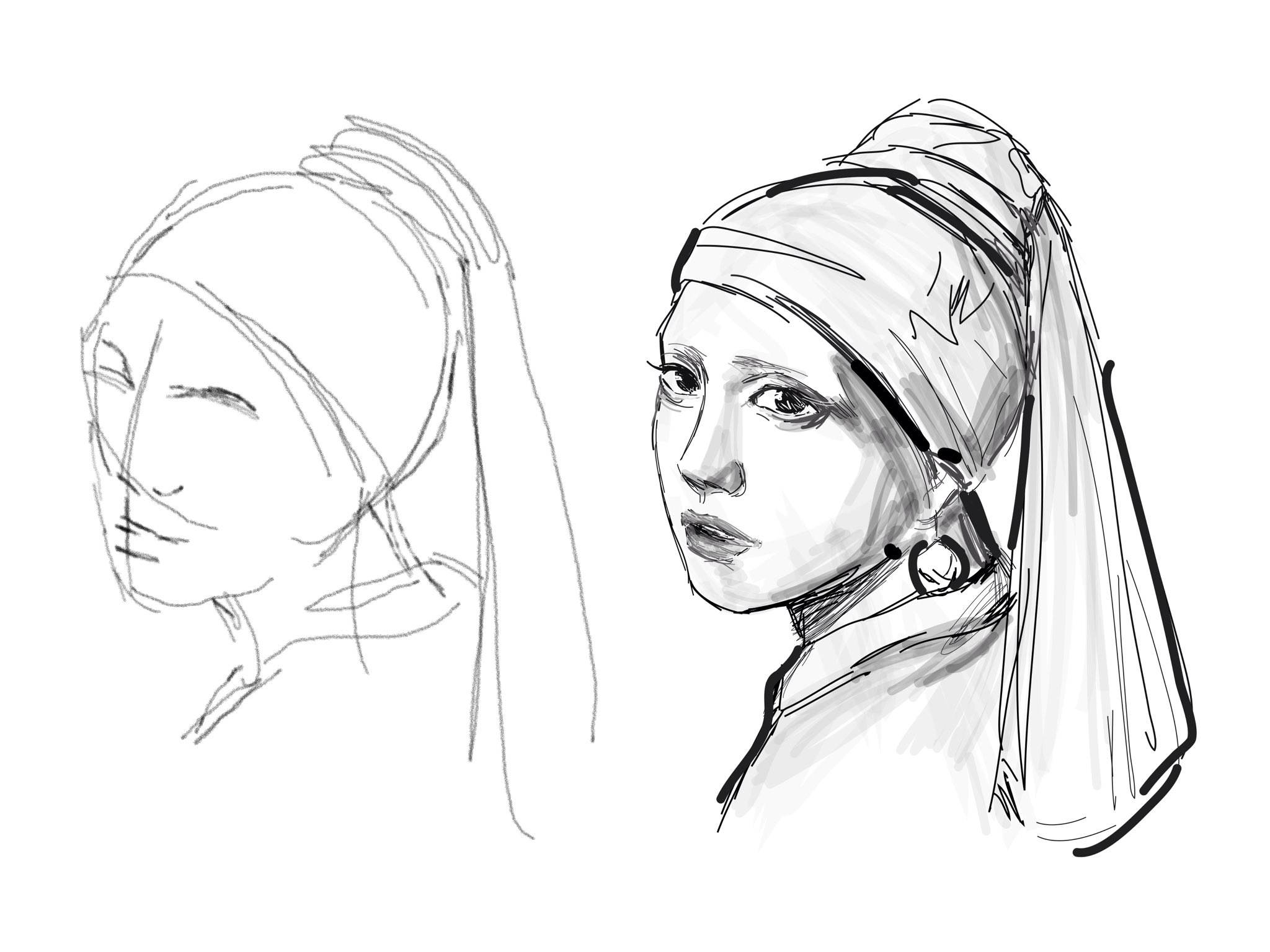
Girl with a Pearl Earring
1672 was so difficult for Vermeer as well as the entire Dutch Republic. It led to a downturn in the art market. He borrowed large amounts of money and was even caught embezzling money from his mother-in-law.
However, Vermeer’s 1665 study of a young woman is startlingly real and startlingly modern, almost as if it were a photograph. This gets into the debate over whether or not Vermeer employed a pre-photographic device called a camera obscura to create the image. Leaving that aside, the sitter is unknown, though it has been speculated that she might have been Vermeer’s maid. He portrays her looking over her shoulder, locking eyes with the viewer as if attempting to establish an intimate connection across the centuries.
Technically speaking, Girl isn’t a portrait, but rather an example of the Dutch genre called a tronie–a headshot meant more as a still life of facial features than as an attempt to capture a likeness.

The Daily Exhibition: A Stage of Constant Scrutiny
Unlike artists, whose works are periodically displayed in galleries, local business owners have an exhibition every day.
His works, often steeped in tranquility and contemplation, invite viewers to look deeper, beyond the surface. Successful businesses instill a sense of reliability, trust, and comfort that once was never described, but is now frequently lambasted on social media. Those positive reviews (and the negative ones as well) don’t show the inner workings and habits of the providers of the experience. Instead, they, like the critics of what are considered masterpieces now, only reflect their contemplation.
In the real estate market, much like in Vermeer’s art, the play of light and shadow can be seen as the balance between market trends and individual client needs. A Realtor must navigate these with a keen sense of awareness and intuition, much like how Vermeer would balance light and shade to bring his paintings to life. Similarly, a restaurateur operates in a realm where every ingredient, every recipe, and every dish served is a testament to their ability to harmonize various elements. Just as Vermeer captured moments of everyday life with a sense of serenity and profoundness, restaurateurs create dining experiences that go beyond mere sustenance. They create atmospheres where every meal is an opportunity for reflection, enjoyment, and satisfaction.
The Final Stroke: Conquering the Inner Critic
jQuery(window).on(‘elementor/frontend/init elementor/popup/show’, function() {
var $currentTooltip = ‘#eael-section-tooltip-6fa3a72’;
if (typeof tippy !== ‘undefined’) {
tippy($currentTooltip, {
content: ‘Click for more information’,
placement: ‘top’,
animation: ‘scale’,
arrow: ‘1’,
arrowType: ‘sharp’,
duration: ‘300’,
distance: ’10’,
delay: ‘400’,
size: ‘regular’,
trigger: ‘mouseenter focus’,
animateFill: false,
flip: true,
flipOnUpdate: true,
interactive: true,
flipBehavior: ‘flip’,
maxWidth: 350,
zIndex: 99999,
followCursor: false,
onShow(instance) {
var tippyPopper = instance.popper;
jQuery(tippyPopper).attr(‘data-tippy-popper-id’, ‘6fa3a72’);
}
});
}
});
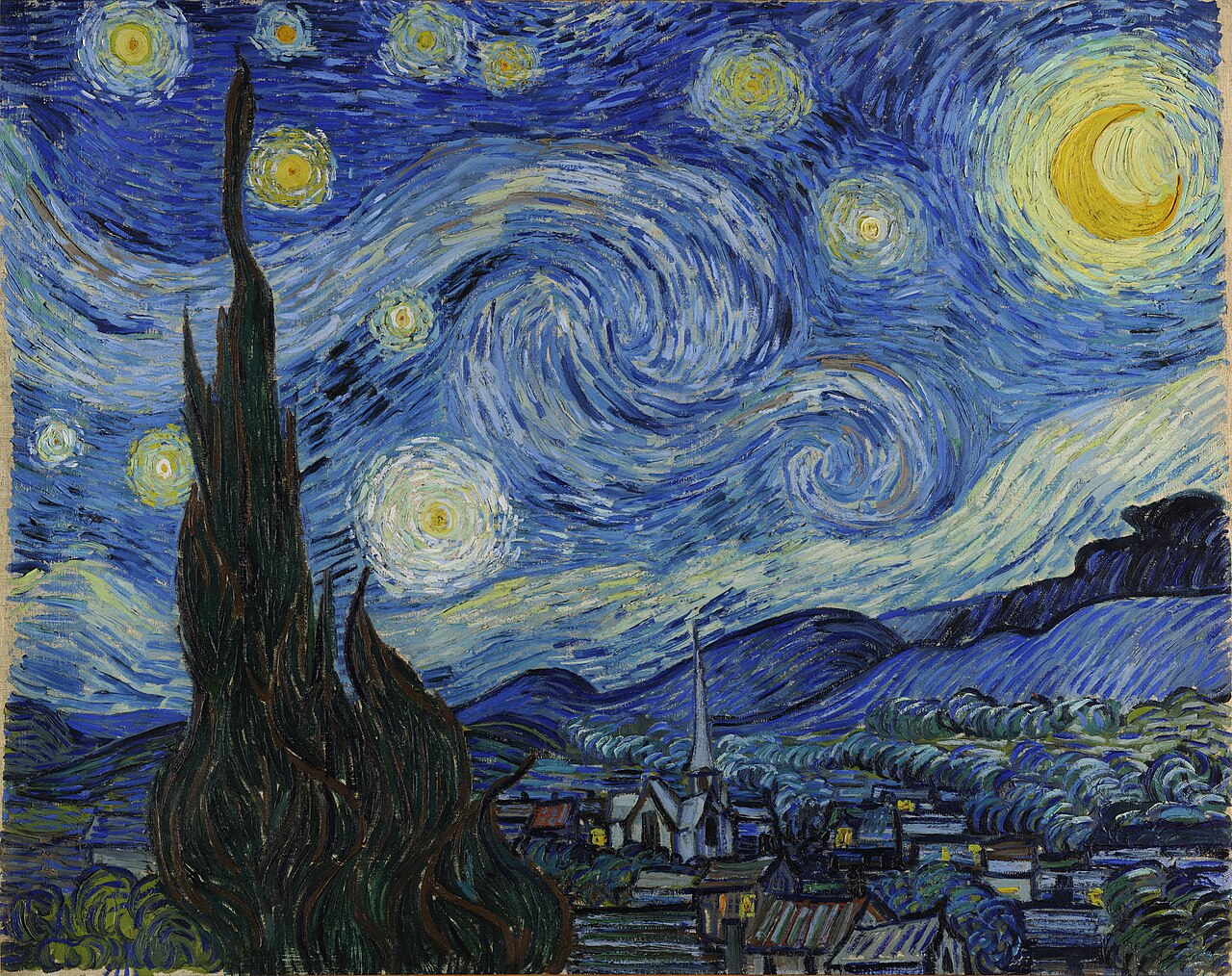
The Starry Night
Plagued by psychiatric illness throughout his life, van Gogh died by suicide in 1890. Evidence suggests that he had manic depression, a chronic mental illness that affects many creative people.
Vincent van Gogh’s most popular painting, The Starry Night, was created by van Gogh at the asylum in Saint-Remy, where he’d committed himself in 1889. Indeed, The Starry Night seems to reflect his turbulent state of mind at the time, as the night sky comes alive with swirls and orbs of frenetically applied brush strokes springing from the yin and yang of his personal demons and awe of nature.

With the rapid pace of change today, many entrepreneurs visualize not only the opportunities, but they see everything that could go wrong as well. Vision is a double-edged sword when it comes to evaluating your prospects, but that is the price for aspiration. The shape and size of a business owner’s objectives differ, but the passion to accomplish them is what drives us, no matter if it is serving the ultimate burger or being the top Realtor in a community. So we must accept that our ability to dream brings the potential for disillusionment too.
Overcoming the inner critic was, perhaps, the very essence of Vincent van Gogh, whose tumultuous life story is a vivid reminder of the inner turmoil faced by many creators. His bold use of color and emotive style speaks to the heart of a small business owner. The daily struggle against doubt and the relentless push towards a unique vision are akin to van Gogh’s battle with his personal demons. Each day, these entrepreneurs, like van Gogh, paint their canvases with the hope of recognition and understanding.
Be yourself; everyone else is already taken.
— Oscar Wilde
jQuery(window).on(‘elementor/frontend/init elementor/popup/show’, function() {
var $currentTooltip = ‘#eael-section-tooltip-e6972ed’;
if (typeof tippy !== ‘undefined’) {
tippy($currentTooltip, {
content: ‘Click for more information’,
placement: ‘top’,
animation: ‘scale’,
arrow: ‘1’,
arrowType: ‘sharp’,
duration: ‘300’,
distance: ’10’,
delay: ‘400’,
size: ‘regular’,
trigger: ‘mouseenter focus’,
animateFill: false,
flip: true,
flipOnUpdate: true,
interactive: true,
flipBehavior: ‘flip’,
maxWidth: 350,
zIndex: 99999,
followCursor: false,
onShow(instance) {
var tippyPopper = instance.popper;
jQuery(tippyPopper).attr(‘data-tippy-popper-id’, ‘e6972ed’);
}
});
}
});
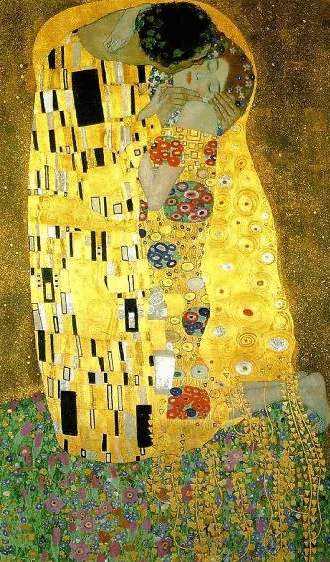
The Kiss
Born into poverty, Gustav Klimt’s father and brother died when Gustav was 30, leaving additional debt for him to assume.
The Kiss, opulently gilded and extravagantly patterned, is Gustav Klimt’s fin-de-siecle portrayal of intimacy. It is a mix of Symbolism and Vienna Jugendstil, the Austrian variant of Art Nouveau. Klimt depicts his subjects as mythical figures made modern by luxuriant surfaces of up-to-the-moment graphic motifs. The work is a high point of the artist’s Golden Phase between 1899 and 1910, when he often used gold leaf–a technique inspired by a 1903 trip to the Basilica di San Vitale in Ravenna, Italy, where he saw the church’s famed Byzantine mosaics.

jQuery(window).on(‘elementor/frontend/init elementor/popup/show’, function() {
var $currentTooltip = ‘#eael-section-tooltip-86a7678’;
if (typeof tippy !== ‘undefined’) {
tippy($currentTooltip, {
content: ‘Click for more information’,
placement: ‘top’,
animation: ‘scale’,
arrow: ‘1’,
arrowType: ‘sharp’,
duration: ‘300’,
distance: ’10’,
delay: ‘400’,
size: ‘regular’,
trigger: ‘mouseenter focus’,
animateFill: false,
flip: true,
flipOnUpdate: true,
interactive: true,
flipBehavior: ‘flip’,
maxWidth: 350,
zIndex: 99999,
followCursor: false,
onShow(instance) {
var tippyPopper = instance.popper;
jQuery(tippyPopper).attr(‘data-tippy-popper-id’, ’86a7678′);
}
});
}
});
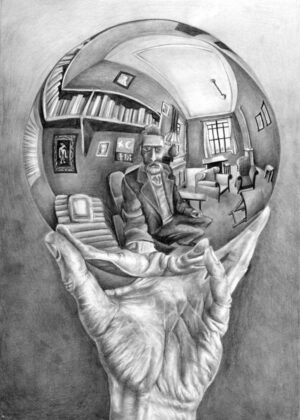
Hand with Reflecting Sphere
MC Escher’s talent was shown through the incredible work he put in. He made 448 lithographs, woodcuts and wood engravings and more than 2000 drawings and sketches.
“Hand with Reflecting Sphere” is actually a self portrait, in which he has drawn his own hand holding a reflective sphere. The reflective sphere is capturing Escher in his studio. The image appears to be that of a left hand holding a spherical mirror. The hand and arm belong to Escher himself who is at the center of a room. The exact center of the sphere is the exact center point between his eyes so that no matter which way the print is rotated that point is always the center focal point. Escher was fascinated by the concept of a mirror reality in his art mixing the actual objects of one reality with the reflected reality. “Hand with Reflecting Sphere” may be one of Escher’s most recognizable prints.

Cover image:
Hand with Reflecting Sphere
MC Escher
The post The Brushstrokes of Business appeared first on IndoorMedia.

